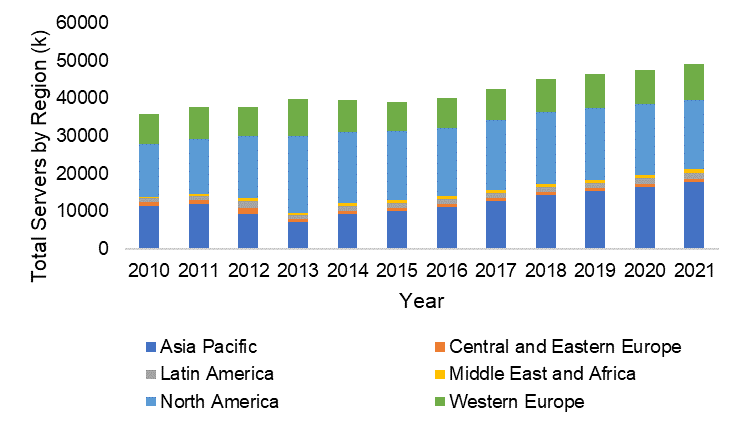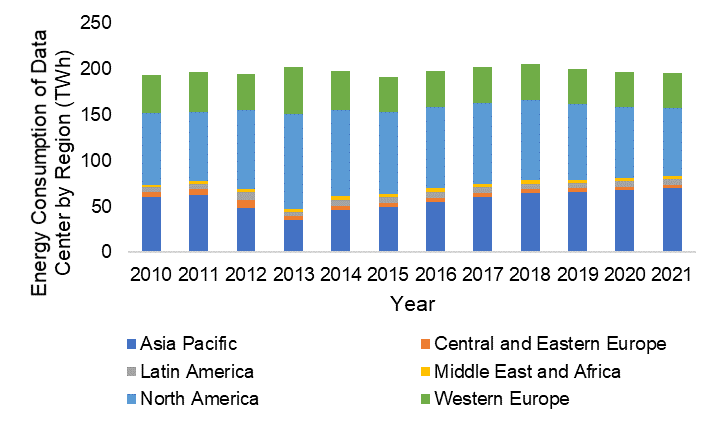
There have been diverse opinions regarding the impact of digitalisation on sustainability, ranging from being seen as an enabler, to potentially causing adverse effects (backfire). Irrespective of these perspectives, the demand for digital services continues to surge, resulting in an exponential increase in demand for the data centres that underpin digitalisation. In the CircEUlar project, researchers are delving into assessing the long-term implications of this trend on energy consumption, material usage, and greenhouse gas emissions.
Historical data plays a pivotal role in projecting alternative futures, incorporating frameworks such as the Shared Socioeconomic Pathways (SSP), essential for strategic and mitigation planning. Unfortunately, global data on data centre operations remains insufficiently documented. While there are historical estimates of data centre activities available, such as those from the Cisco report and Masanet et al. (2020)’s work, historical statistics on data centre energy usage at national or global levels are lacking. To bridge this gap, mathematical models are typically employed to estimate energy consumption, with extrapolation-based approaches being prevalent despite their limitations and relatively pessimistic estimation.
Masanet et al. (2020) have introduced a bottom-up approach, offering a more optimistic outlook by suggesting a mere 6% rise in energy usage between 2010 and 2018, despite a substantial surge in demand. Figure 1 shows the historical estimates of number of servers by region, extracted from Cisco report and Masanet et al.’s work. Figure 2 shows the energy use estimates based on the work of Masanet et al. (2020) and our calculation combining the data from Cisco. Furthermore, we aim to investigate the implications on material consumption, as illustrated in Figure 3.

Figure 1: The number of servers by region (Own figure; Data source: Masanet et al. 2020)

Figure 2: The energy consumption of data centre by region (Own figure; Data source: Masanet et al. 2020)

Figure 3: The estimated material consumption of data centre by region.
(Own figure; Estimated based on the identified material intensity by Fitchter and Hintemann, 2014)
Building upon these historical estimates, our ongoing efforts involve developing a model to project future consumption and GHG emissions based on the Shared Socioeconomic Pathways. This endeavour entails identifying the proxies (variables represent broader economic and demographic trends) for the underlying drivers of energy and material consumption, beyond fundamental factors that directly quantifying the activities and intensity of data centres.
The projected SSP serves as the baseline scenario to assess “What if” scenarios which is not captured in historical trends, such as:
- “what if” AI and other activities are widely implemented and increase the demand significantly,
- “what if” waste heat recovery is widely introduced and increase the energy efficiency of data centre,
- “what if” demand response (24/7 carbon free energy data centre) is introduced and decrease the carbon intensity of the energy consumed.
By leveraging historical data and forward-looking scenarios, we aim to inform strategic decision-making and mitigation efforts in navigating the complexities of our digital future.
